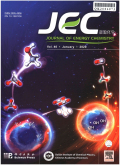- 钛学术文献服务平台 \
- 学术期刊 \
- 工业技术期刊 \
- 石油与天然气工业期刊 \
- 能源化学期刊 \
Tailored amorphous titanium oxide and carbon composites for enhanced pseudocapacitive sodium storage
Tailored amorphous titanium oxide and carbon composites for enhanced pseudocapacitive sodium storage
基本信息来源于合作网站,原文需代理用户跳转至来源网站获取
摘要:
As an effective and competitive supplement to the commercial-ized lithium ion batteries (LIBs),sodium ion batteries (SIBs) have been receiving increasing attention in recent years due to lower cost,richer content,and broader distribution of sodium [1-7].Sodium has similar electrochemical properties to lithium,and thus the concepts for the preparation of electrode materials for SIBs can be borrowed from LIBs [8,9].On this basis,cathode materials have achieved some progress [10-12].Still,the inability of graphite to store sodium has stimulated research on other types of anode materials,including organic-based materials,alloying-based mate-rials,redox-based materials,and insertion-based materials[13-16].Currently,one of the most critical challenges for SIB anodes is their sluggish electrochemical intercalated reaction kinetics caused by the larger ion radius.More discussions in this area are still needed to understand ions storage mechanisms in dif-ferent conditions,and it is essential to explore novel strategies for electrodes designing.

推荐文章
Forest carbon storage in Guizhou Province based on field measurement dataset
Forest carbon storage
Field measurement dataset
Karst landform
Low carbon storage of woody debris in a karst forest in southwestern China
Secondary forest
Fine woody debris
Coarse woody debris
Dead wood
Karst
Subtropical China
Estimation of soil organic carbon storage and its fractions in a small karst watershed
Bare rock rate
Estimation method
soil organic carbon storage
Small watershed
Karst
Spatial analysis of carbon storage density of mid-subtropical forests using geostatistics: a case st
Carbon storage density
Geostatistics
Mid-subtropical forests
Spatial autocorrelation
Spatial heterogeneity
内容分析
关键词云
关键词热度
相关文献总数
(/次)
(/年)
引文网络
引文网络
二级参考文献 (0)
共引文献 (0)
参考文献 (0)
节点文献
引证文献 (0)
同被引文献 (0)
二级引证文献 (0)
2022(0)
- 参考文献(0)
- 二级参考文献(0)
- 引证文献(0)
- 二级引证文献(0)
引文网络交叉学科
相关学者/机构
期刊影响力
能源化学
主办单位:
中国科学院大连化学物理研究所
中国科学院成都有机化学研究所
出版周期:
双月刊
ISSN:
2095-4956
CN:
10-1287/O6
开本:
出版地:
大连市中山路457号
邮发代号:
创刊时间:
语种:
eng
出版文献量(篇)
2804
总下载数(次)
0
总被引数(次)
7996
期刊文献
相关文献
推荐文献
- 期刊分类
- 期刊(年)
- 期刊(期)
- 期刊推荐
一般工业技术
交通运输
军事科技
冶金工业
动力工程
化学工业
原子能技术
大学学报
建筑科学
无线电电子学与电信技术
机械与仪表工业
水利工程
环境科学与安全科学
电工技术
石油与天然气工业
矿业工程
自动化技术与计算机技术
航空航天
轻工业与手工业
金属学与金属工艺
能源化学2022
能源化学2021
能源化学2020
能源化学2019
能源化学2018
能源化学2017
能源化学2016
能源化学2015
能源化学2014
能源化学2013
能源化学2012
能源化学2011
能源化学2010
能源化学2009
能源化学2008
能源化学2007
能源化学2006
能源化学2005
能源化学2004
能源化学2003
能源化学2002
能源化学2001

 免费查重
免费查重










